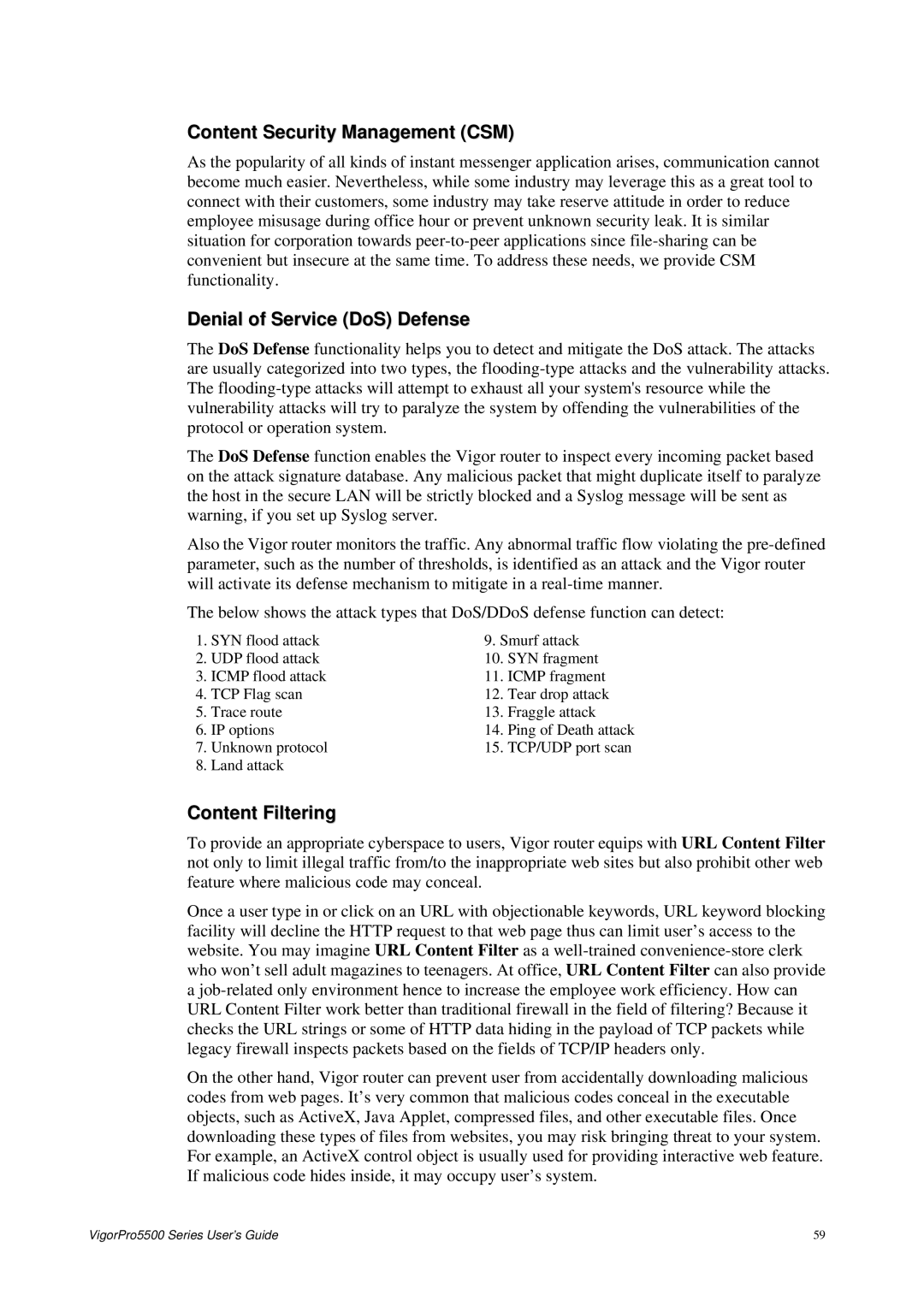Content Security Management (CSM)
As the popularity of all kinds of instant messenger application arises, communication cannot become much easier. Nevertheless, while some industry may leverage this as a great tool to connect with their customers, some industry may take reserve attitude in order to reduce employee misusage during office hour or prevent unknown security leak. It is similar situation for corporation towards
Denial of Service (DoS) Defense
The DoS Defense functionality helps you to detect and mitigate the DoS attack. The attacks are usually categorized into two types, the
The DoS Defense function enables the Vigor router to inspect every incoming packet based on the attack signature database. Any malicious packet that might duplicate itself to paralyze the host in the secure LAN will be strictly blocked and a Syslog message will be sent as warning, if you set up Syslog server.
Also the Vigor router monitors the traffic. Any abnormal traffic flow violating the
The below shows the attack types that DoS/DDoS defense function can detect:
1. | SYN flood attack | 9. Smurf attack | |
2. | UDP flood attack | 10. | SYN fragment |
3. | ICMP flood attack | 11. | ICMP fragment |
4. | TCP Flag scan | 12. | Tear drop attack |
5. | Trace route | 13. | Fraggle attack |
6. | IP options | 14. | Ping of Death attack |
7. | Unknown protocol | 15. | TCP/UDP port scan |
8. | Land attack |
|
|
Content Filtering
To provide an appropriate cyberspace to users, Vigor router equips with URL Content Filter not only to limit illegal traffic from/to the inappropriate web sites but also prohibit other web feature where malicious code may conceal.
Once a user type in or click on an URL with objectionable keywords, URL keyword blocking facility will decline the HTTP request to that web page thus can limit user’s access to the website. You may imagine URL Content Filter as a
On the other hand, Vigor router can prevent user from accidentally downloading malicious codes from web pages. It’s very common that malicious codes conceal in the executable objects, such as ActiveX, Java Applet, compressed files, and other executable files. Once downloading these types of files from websites, you may risk bringing threat to your system. For example, an ActiveX control object is usually used for providing interactive web feature. If malicious code hides inside, it may occupy user’s system.
VigorPro5500 Series User’s Guide | 59 |
